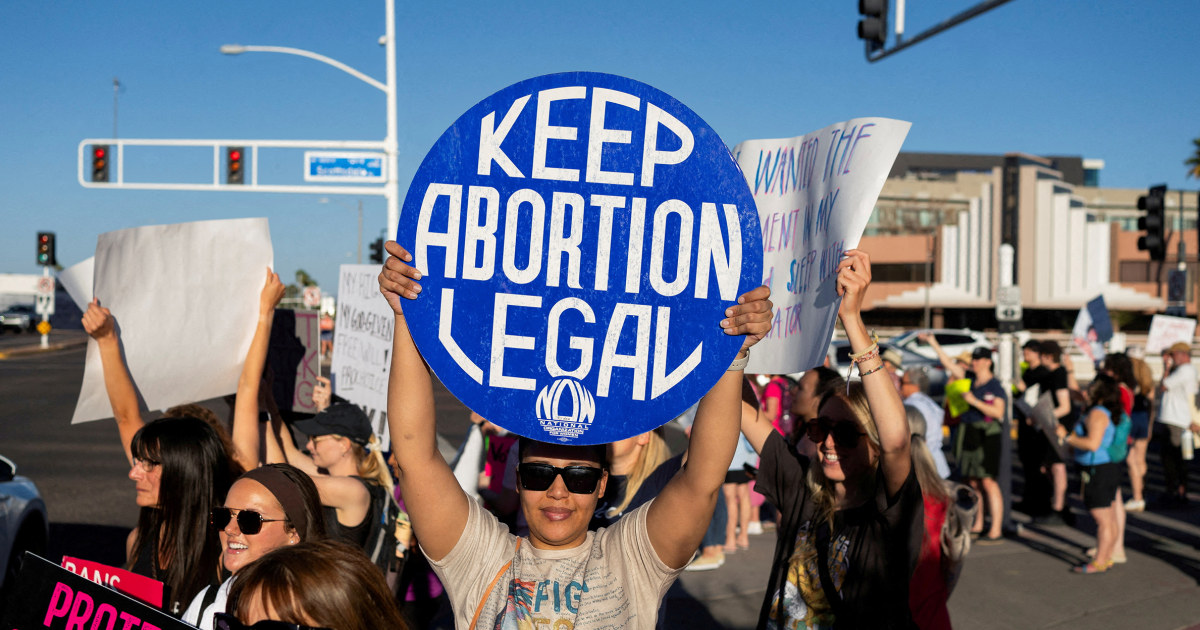 Science & Environment
Science & Environment
Hurricane Beryl closing in on Caribbean nations of Grenada,…
Grenadian officials warned residents to stay indoors and to seek shelter in concrete-lined bathrooms, if possible. Thousands of Grenadians sought refuge in shelters, local media reported.
“The storm is virtually upon us,” Grenada Prime Minister Dickon Mitchell said in a media briefing early Monday. “Now is not the time to be adventurous.”
It’s still too early to say which landmass is next in line to be struck by Beryl after the Lesser Antilles, but Jamaica, Cuba and Mexico’s Yucatán Peninsula in particular are all at risk. The odds of Beryl entering the Gulf of Mexico as a hurricane are low, but not zero, though that possibility wouldn’t arise until next weekend. The risk to the United States is very low.
Later this week, a new tropical storm may form that could follow a similar path as Beryl, impacting the same islands. The 2024 Atlantic hurricane season is likely to remain a busy one. A building La Niña weather pattern will favor conditions that will make it easier for tropical storms and hurricanes to form. Wind shear, or a change of wind speed and/or direction with height, will also be reduced, which means storms will have an easier time developing. That’s why this season looks to be exceptionally active or even hyperactive.
These areas will be hardest hit today
Hurricane warnings are in effect for Barbados, Grenada, Tobago and St. Vincent and the Grenadine Islands, while tropical storm warnings cover St. Lucia, Trinidad and Martinique.
Grenada, a nation of about 125,000 people, was preparing for a direct hit from Beryl, with the eye of the storm targeting the islands of Carriacou, home to about 8,000 people, and Petite Martinique, north of the island of Grenada, Mitchell said. The country welcomed some 335,000 tourists in 2022.
Farther north, residents of St. Vincent and the Grenadines were also preparing for major impacts. Grenadine islands including Mayreau, Union Island and Petit St. Vincent appeared closest to the track of Beryl’s eye, just to the north of Carriacou.
“We have to be cautious,” Ralph Gonsalves, the country’s prime minister, said in an address Sunday night. “This is a serious hurricane.”
Beryl’s strength is being felt in the Windward Islands despite the storm still being dozens of miles away. A tree fell on a home in the Les Coteaux neighborhood of Tobago, Tobago Emergency Management Agency posted Monday morning. A Tobagonian weather station about eight miles away in Crown Point reported sustained winds of 46 mph with a gust to 54 mph, the National Weather Service said about 11 a.m. Monday. The two islands are home to about 1.4 million people.
Beryl’s hurricane-force winds — defined as sustained winds over 74 mph — extend outward up to 40 miles from Beryl’s center, according to the latest hurricane center update. That means the most devastating impacts could be confined to one or two islands.
Beryl is on track to be one of the strongest hurricanes to hit the southernmost Windward Islands in some 174 years of record-keeping, hurricane expert Michael Lowry wrote in his newsletter Eye on the Tropics early Monday. It could end up the worst on record. Hurricane Ivan had maximum sustained winds of 135 mph when it killed 41 people and caused massive damage across Grenada in 2004. As of 11 a.m. Eastern time, Beryl had maximum sustained winds near 140 mph.
How this storm became a monster
Beryl took advantage of near-record-warm water temperatures in the mid 80s. Sea surface temperatures are running 3 or 4 degrees above average, which to some extent can be linked to human-caused climate change. The waters are more reminiscent of August than late June or early July.
Beryl intensified from a tropical depression to a Category 4 in just 48 hours, something that is unprecedented for June and rare year-round. It also was able to develop because of a localized minimum in wind shear, meaning there would be nothing to tear it apart.
Beryl was in a favorable position near a clockwise-spinning high to the northeast and a counterclockwise-spinning low to the northwest. In between, a narrow strip of air was moving away from Beryl. That helped evacuate “outflow,” or spent exhaust air from the high altitudes over Beryl. In turn, more warm, moist air was able to enter the storm from below. (Imagine placing a fan above a chimney; the more air you blow out the top, the more air can be sucked in the bottom to fan the flames.)
What’s next for Beryl and other areas to watch
Beryl may spend Monday into early Tuesday fluctuating between Category 3 and 4 strength in the eastern Caribbean. After that, it will continue moving west while gradually weakening.
Jamaica could be fringed by the storm Wednesday. Then it will probably hit Mexico’s Yucatán Peninsula south of Cancún on Thursday night or early Friday.
Meanwhile, a new disturbance called Invest 96L is located midway between South America and Africa in the middle of the Atlantic’s Main Development Region. The Hurricane Center estimates it has 70 percent odds of eventual development. It could take a similar path to Beryl, impacting the same beleaguered islands as a named storm by late this week.
Meanwhile, another tropical storm — Chris — came together last-minute in the Bay of Campeche overnight, bringing breezy winds and heavy rainfall as it made landfall in Mexico around 4 a.m. Eastern time. The states of Guanajuato, Queretaro and San Luis Potosi were expected to see widespread rain totals of 4 to 8 inches, with a few locales receiving up to 10 inches.










